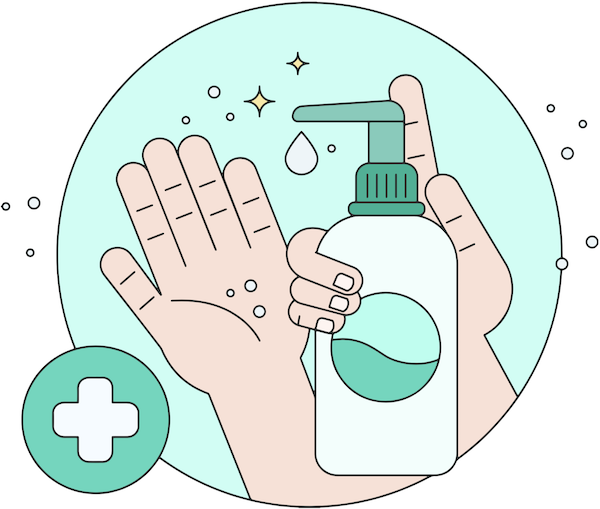With the continuation of the holiday season and its multiple ensuing social interaction occurrences, here is some health info for now and into our new year. Two food science and food microbiologists have exploded myths about what is and isn’t safe in the controlling of harmful bacteria, especially in our use of food items.
Paul Dawson and Brian Sheldon, in their Wall Street Journal article, explain, “It turns out that many of the things we do to keep ourselves safe from harmful bacteria just make the problem worse.”
Did you know that there are more bacterial cells in your body (about 39 trillion) than there are human cells (about 30 trillion)? Most of the bacterial cells are harmless and even good for you, but some can be deadly. According to the Centers for Disease Control, one in six Americans yearly comes down with a food-borne microorganism. Here are two very important ways that we can avoid these harmful bacteria:

A. Wash your hands frequently and thoroughly (with warm water and soap), especially when touching surfaces as you handle or eat food.
B. Cook food to the recommended temperatures, and store leftovers according to safety rules.
In addition, the following are 5 myths our microbiologists have concluded after an intensive amount of research (2006-2016) on the subjects.
1. The Five-Second Rule: Food has been found in labs not safe to eat after being dropped and retrieved off of the floor, even after only 5 seconds there. Waiting 60 seconds, of course, makes the bacteria growth 10 times worse. Throw the dropped or spilled food away!
2. Ice Cubes and Lemon Juice: Despite common belief of the safety of ice in our drinks and the acid in lemons helping to kill off contaminants in our drinks, these are myths also. Dawson and Sheldon found that 60-80% of E. coli bacteria introduced onto hands transferred directly to a drink via ice cubes.
“For lemons, an average of 6,000 E coli were transferred to wet lemons…(via the same hands).” At room temperature, the bacteria multiplied six-fold over a 24 hour period.
3. Restaurant Hazards: In addition to food and drinks served in eateries, researchers have found that Salmonella and E. coli can survive on laminated plastic menus up to 72 hours. These same strains last only 6 hours on paper menus. Dawson and Sheldon discovered that about 11% or an average of 3 million germs were transferred in just the one minute a person generally handles the menus.
4. Hand Sanitizers: Then should we keep a hand sanitizer handy? Not necessarily. Keep washing those hands! Sanitizers are tested in labs to be effective (99%) only against certain bacteria, not including Salmonella and E. coli.
5. Hand Dryers: Having washed your hands correctly, you next use the hand dryer in the public washroom. Unfortunately, these machines actually circulate the bioaerosol droplets (created by the flushing of toilets) into the room’s air. A United Kingdom study in 1993 concluded that electric hand dryers increased bacteria on washed hands fivefold. Paper towels decreased bacteria by 42%. Today’s jet air dryers spread bacteria as far as 6 feet. This is an average of twice as far as the older dryers. Gas station hand dryers have been discovered to be slightly cleaner than college dorm ones. “But those in grocery-store bathrooms circulated nine times more bacteria than the other two (gas stations and dorms),” according to our microbiologists.
Dawson and Sheldon’s last advice to us recommends: “Try not to think too much about those trillions of bacteria swirling around you.” As we approach our 2019 new year, my optimistically best advice to you is to try to remain optimally healthy! Happy Holidays!



